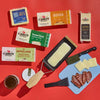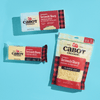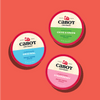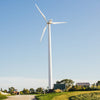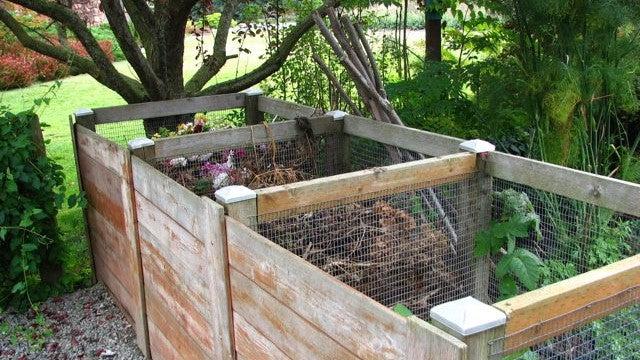
How to Compost in 6 Steps

Spring has sprung in the North East, and the urge to get our hands into the dirt is strong. As any gardener can tell you, one of the most valuable tools for a successful harvest or a vibrantly healthy lawn is nutrient-rich compost. It’s like an organic multi-purpose vitamin for your plants!
There are lots of benefits to making it in your own backyard composting system (see below), but you can also buy it from your local gardening center or hardware store. Whichever you do, you are contributing to the cycle of sustainability by recycling potentially wasted resources into what some call black gold.

Several Cabot farm families produce compost on their farms, which they sell to neighbors within their communities. The Fosters of Middlebury, Vermont have even built one of the Northeast’s larger manure-based compost companies.
Bob Foster, who was recently inducted into Vermont’s Agricultural Hall of Fame following in the footsteps of his father and uncles, is very proud of his family’s pioneering sustainability efforts. What is composting? “The whole concept is to close the loop,” he says. “I enjoy the thought that we are converting solar energy into food, fiber and energy to nourish animals, plants, and people.”

Seven members of the fourth and fifth generation work together on Foster Brothers Farm and at the family-owned company called Vermont Natural Ag Products, which produces and markets a line of gardening and landscaping products. Their signature product is MooDoo® organic, composted cow manure.
In addition to sourcing waste from their own dairy herd, the Fosters recycle manure from other farms and partner with the local solid waste district to use the community’s food scraps and leaf and yard waste diverted from the landfill. “Part of it is using materials other people call waste. We’re helping the environment as well as ourselves,” Bob says. “In the current lexicon, it’s what they call sustainable,” he adds with a chuckle.
When you compost at home, you can make an important contribution to sustainability, too.
Why is composting sustainable?
As much as 40% of the food produced in the world goes to waste. This is not only a waste of food and money, but also of all the natural and human resources it takes to make that food, as well as valuable and scarce landfill space. And, contrary to what many people think, food waste will not decompose in the landfill; instead, it rots very slowly and emits a significant amount of methane, a potent, destructive greenhouse gas. Our friend Gabrielle at Gardener’s Supply added, “There are other environmental benefits to composting too, such as improved soil health and moisture retention. Also, by promoting strong root growth in plants, compost reduces wind- and water-related soil erosion.”

Ready, Set, Compost!
1) Determine your Composting Goal
First, ask yourself:
- “Do I want to create compost for my garden?” If yes, then follow steps for Six Easy Steps to Compost for your Garden
- Or, “Do I want to simply divert food scraps form the landfill?” If yes, then read Green Cone Composting.
- Or, “Do I want to compost if I don’t have outdoor space?” If yes, then read Small Space Composting.
Another helpful tool!
Don’t want to keep running to the back yard as you cook…no problem! Our friends and fellow B Corp Gardener’s Supply have several compost bins that let you collect your compost scraps right in your kitchen for your next trip outside.
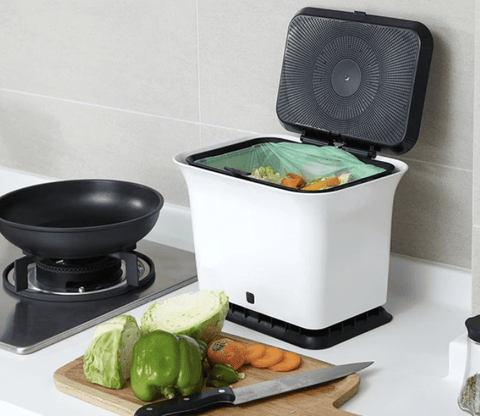
2) Figure out your Composting Style
The Minimalist Composter: Pile in the yard compost
The DIY Composter Enclosed Bins: Homemade open compost bins
The Hands-Off Composter: An enclosed compost bin
The Action Composter: A tumbler or spinning compost bin
The Small Space Composter: Small space, big sustainability plans
3) Six Easy Steps to Compost for your Garden
1. Select an open, sun-filled spot
2. Place composter on the ground (no digging necessary) or build DIY compost bins
3. Collect food scraps from your kitchen and empty into composter (greens)
4. Add your carbon such as sticks, leaves, dried grass, sawdust, wood chips, fibers (browns)
5. Stir with a stick or shovel so that compost is being aerated and brown and green materials mix
6. Pull nutrient rich garden compost out and use it on your flowers, veggies, and more!

4) Steps to use Green Cone Composting for recycling food scraps (but not produce garden compost)
1. Select a sunny spot where you can dig into the ground
2. Dig according to manufacturer’s instructions to bury the bottom section of the composter
3. Add greens and only greens – but all of them (yup, animal waste included)
4. Watch as the Green Cone safely uses solar heating to digest up to 11 pounds of food waste a week. And, because over 90% of the waste material gets absorbed as water by the soil, you only need to clean once every few years!

5) Small Space Composting
If you are interested in composting but don’t have the outdoor space to have a cone compost or open compost, you can still compost! “By keeping your kitchen scraps out of the landfill, it reduces methane emissions from those landfills — which are at capacity nationwide. Many communities are struggling with an abundance of trash, have no space for new landfills, and are now requiring kitchen scraps to be composted either at home or commercially.”- Gabrielle at Gardener’s
Here are a few ways to compost with a small space.
- Several trash companies and towns offer composting for individuals who don’t have the space on their property. There may be a farmer’s market, community garden, or other facility that would take your food scraps. Don’t be afraid to reach out to your local municipality to see what composting options there are available in your community!
- Many companies are now making Electric Kitchen Waste Composters, which can produce compost in as little as five days-no outdoor space needed!
- Another option for composting is a worm farm composter (also known as vermi composting). A worm composter transforms vegetable scraps into valuable fertilizer. For more information on this process, check out this great how to guide by our friends at Gardener’s!
6) Composting Essentials and Concerns
Carbon is key! You NEED carbon in your compost; this is what keeps it from being a pile of rotting food. Carbon = no offensive smell; no rodents or animals; no leaky, yucky mess. Carbon is found in what composters call ‘brown’ materials: leaves, fruit waste, corn stalks. Nitrogen comes from the ‘green’ materials: grass clippings, veggie scraps and other food waste like coffee grounds. A good rule of thumb is to aim for three parts carbon to one part nitrogen.
Compost should not attract rodents and other animals. This is only the case when there is too much moisture or too much nitrogen (green). Specifically, to avoid problems with bears in your area, increase the amount of brown materials in the compost. Cover kitchen scraps (green material) with brown material after they are added and turn your compost to allow oxygen and prevent strong odors.
 It shouldn’t smell terribly bad. If it does, there is probably too much moisture and/or lack of oxygen; it needs to be turned. It is commonly misunderstood that cheese and other dairy products cannot be composted; however, they can in moderate quantities.
It shouldn’t smell terribly bad. If it does, there is probably too much moisture and/or lack of oxygen; it needs to be turned. It is commonly misunderstood that cheese and other dairy products cannot be composted; however, they can in moderate quantities.
In summary: Browns + Greens + Sun/Heat + Stir = Healthy Compost!
Let the Gardens Begin!
If you’re getting your garden ready for the season, head over to MooDoo® for some tips.

How to learn more about composting:
It’s pretty simple, we promise. A good way to start learning how to make compost is by trying this activity Cabot created as part of our Scout and youth group patch program.

The Sustainability Patch: Cabot’s Small Steps Toward Sustainability is a free educational patch program that teaches kids how they can help make their homes and communities more sustainable. Among the activities is one that lets kids explore composting. It teaches the science behind composting, what food and yard waste can be composted, and even how to make your own micro composter! Click here to learn more about this program.
Gardener’s Supply is also a great resource for general composting information, as well as for debunking compost myths.
This post was originally posted on 6/21/16 and updated on 5/23/22.
